Remaking a gas stove for bottled gas: how to rearrange nozzles for working on liquefied fuel
I really want to see a gas stove in the kitchen, but there is no gas main next to the house? This is not a problem at all, alteration of a gas stove for bottled gas is quite possible, and it can be done without any problems with your own hands.
We will tell you in detail about the features of the operation of gas stoves connected to LPG cylinders. Consider the types of nozzles, the reasons for which their replacement is required. Having familiarized with the material, it will be possible to choose the right nozzles and easily perform work on the conversion of a gas stove.
The content of the article:
How to determine the correct operation of a gas stove
When igniting a burner there should be no extraneous sounds in the form of claps. The flame should burn evenly, its tongues should be bluish-white, and it is not for nothing that gas is otherwise called “blue fuel”.
If, during the combustion of the air-gas mixture, yellowish impurities are observed, and the tongues of the flame acquire a red tint, then this clearly indicates the incorrect operation of the nozzles.
When transferring the stove from the main gas to the tank, all the stated disadvantages are very characteristic. And plus to this, because of improper pressure, soot emission will be observed. So immediately with the naked eye it is difficult to notice, but it will manifest itself in the form of black spots on the dishes after 1-2 days of operation.
Avoiding all these troubles is pretty easy. It is necessary to choose the right nozzles for the gas stove when changing operating conditions and conversion for bottled gas. It should be borne in mind that due to the difference in pressure of the incoming fuel, the diameter of the holes in the nozzles (jets) will also be different.
What is a nozzle (nozzle)?
Almost all gas stoves equipped in such a way that they are capable of working both on natural gas and on propane (from a replaceable cylinder). It should be noted that when switching to liquefied gas, not only the replacement of the nozzles is required, but also the installation of a gearbox, which is responsible for equalizing the pressure of the incoming fuel.
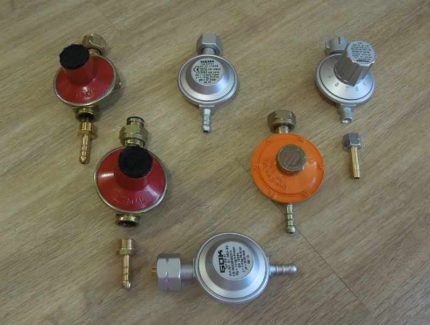
The nozzle (nozzle) is a bolt in the head of which there is a hole for supplying gas to the burner. After entering the burner, the gas is mixed with air, and the gas-air mixture is ignited.
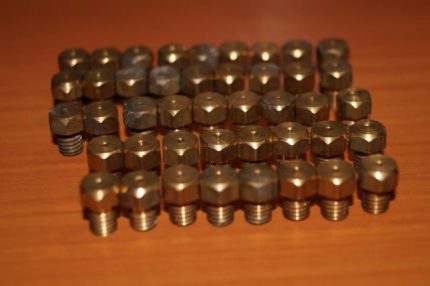
Depending on the fuel used, there are two types of nozzles: for the supply of blue fuel from the main pipeline and for the supply of gas from a gas tank or cylinder.
The nozzles (nozzles) for natural gas in comparison with the nozzles for liquefied fuels are characterized by:
- The shortened body of the bolt;
- Fewer threads;
- The increased diameter of the hole.
In the case when incorrect operation of the stove is observed, it is best to replace not one nozzle, but the whole set at once, but when switching to bottled gas, this is generally a necessity.
Why and why you need to change the nozzle
The nozzles for different types of gas vary significantly, so when changing the type of gas-air mixture, nozzle replacement is simply necessary. If you pay attention to the diameter of the hole, it will become obvious that they are not the same. Moreover, the diameter of the hole depends not only on the type of gas used, but also on the size of the burner itself.
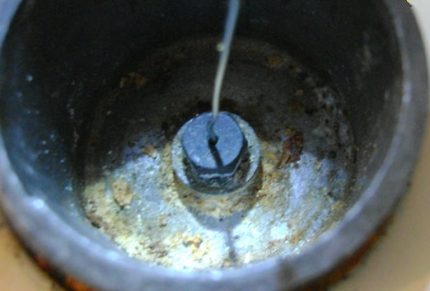
Each of the gas stove burners is distinguished by its power and size, therefore, for stable operation, it is equipped with a separate nozzle.

The more powerful the burner, the greater the volume of gas it needs to operate, therefore, the diameter of the nozzle requires a larger one.
Selection of a nozzle for bottled gas
As already mentioned, the propane nozzle has a shortened body and a smaller outlet diameter. It is not recommended to try to independently reduce the hole on your own, since even fractions of millimeters are important here. By eye, you can only improve the performance of the stove, but not achieve its perfect operation.
It is important to understand that standard jets simply do not exist. They are intended for each specific model. Modern stoves are equipped with a set of jets designed to work on propane. Some models are produced specifically for bottled gas.
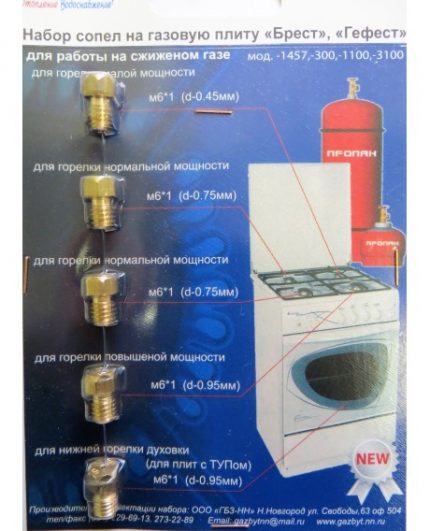
If you did not have such a set, then the question of their acquisition is solved very simply. Finding the right product for popular models is very easy in any specialized store selling gas equipment. In extreme cases, they can always be ordered by visiting the official website of the manufacturer.
Procedure for replacing jets
Before moving the gas stove to work on bottled gas, you should study the instructions attached by the manufacturer to the equipment. The complete manual describes in detail how to change and which nozzles will be required for replacement.
It should be noted that at all stages of work on rearrangement of jets must be performed very carefully. The use of force here is completely unacceptable, since excessive careless movement can lead to damage, followed by major repairs of the equipment.
The key to a successful replacement is compliance with safety standards and the availability of a simple set of tools:
- The required number of nozzles, depending on the design of the burner;
- Set of open-end wrenches or ring spanners;
- A few Phillips screwdrivers of a suitable size;
- Flexible hose for connecting the cylinder
The work begins with the shut-off of the gas supply valve and surface preparation for storing the removed parts and supports. Next, raise the metal grill, remove the dividers from the burners and remove the burners from the nests.
Hob removal
To gain access to the nozzles, it is necessary to remove the cover of the burner table, which is usually fastened with screws. The number of mounting screws in different models may vary.
In any case, you just need to remove the screws, after which the cover can be easily removed. In most modern models, nozzles are screwed directly into the housing, in this case, the dismantling of the table is not required. Consider a more complex option, where it is impossible to get to the nozzles without removing the cap.
The internal structure of the gas stove
Burner housings are attached to traverses, which are metal strips. The design of all burners is the same, the only difference is the length of the aluminum pipe through which the fuel is supplied.
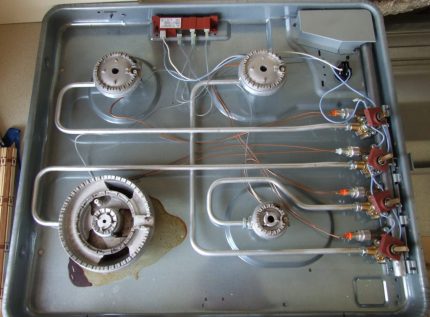
The exit from the tube is called a nozzle, from which gas enters the nozzle, then enters the burner leg, mixes with air and enters the divider.
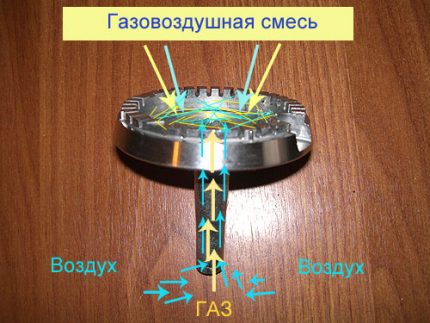
The latter must be carefully examined even during operation - uneven cross-section of the flame indicates that the divider is clogged, which is why gas burner burns poorly. It is required to purge or clean it.
Ways to replace jets
The easiest way to replace it is to use a wrench to simply unscrew the nozzle and install a new one in its place. But this method is not always suitable, since the tips very often stick to the nozzle, and excessive force can lead to damage.
It is best to pre-release the tips of each of the jets. To do this, find the latch, which is a plate with a slot. If you gently squeeze the latch with your fingers, you can easily remove it from the slot, after which by simply pressing the tube the nozzle with the tip is lowered down from the mounting ring.

Trying to remove the nozzle attached to the tip, you can simply break the tip itself. If the nozzle does not turn out without effort, then the released tip must be clamped in a vice or try using an adjustable wrench.
If you remove the tip, the o-ring will remain inside. When installing a new nozzle, it must again be put on the pipe. Lubrication of the ring is not required, as is the seal on the nozzle thread. After installing the nozzle in place, it remains to complete the work on assembling the burner table if it was dismantled.
Replacing the nozzles in the oven
When solving the problem of how to correctly transfer a gas stove to bottled gas, do not forget about the oven, because it can also work incorrectly with a change in pressure and fuel composition.Usually the nozzle is located in a special housing behind the wall of the oven on the left side. The arc curved burner is connected to the nozzle.
In order to access the burner, you need to remove the floor. A specially cut hole is provided for this, just pull it towards you and the floor will come out. After that, you need to unscrew the bolts of the burner, remove it and gain access to the hole where the gas comes from. It is here that the nozzle is located.
During operation, the nozzle could very stick to the nozzle body. In this case, do not try to unscrew it with excessive force. Since if the thread is broken, then the entire housing will need to be replaced. It is better, as in the case of burners, to remove the nozzle with the nozzle.
To easily unscrew the nozzle from the nozzle to replace it, it is possible to carry out processing by special means. It remains to screw a new nozzle into the nozzle and perform assembly work in the reverse order.
Conclusions and useful video on the topic
Comparison of the work of the gas stove before replacing the nozzles during the transition to bottled gas and after. Performing nozzle replacement work:
Replacing nozzles in a gas stove oven:
Nozzles or jets are an important component of any gas stove. Only a clear correspondence to the diameter of the outlet can guarantee high-quality and stable operation of the equipment.
It is not at all difficult to purchase and replace nozzles with your own hands. The main thing is to take into account that all work must be carried out carefully without the use of unnecessary efforts. Each of the nozzles has its own marking, if you look closely, it is impossible to confuse them, both when buying or when replacing.
Please leave comments in the block form below, ask questions, post a photo on the topic of the article. Share useful information that is useful to site visitors. It is possible that your advice will be of great help.

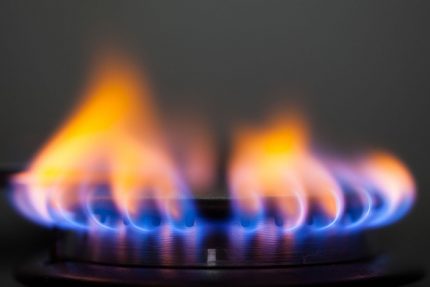
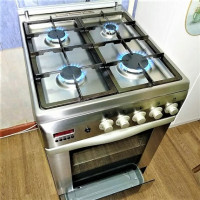 How does a gas stove work: the principle of operation and the design of a typical gas stove
How does a gas stove work: the principle of operation and the design of a typical gas stove 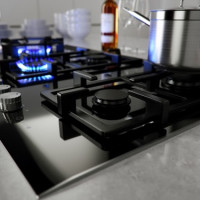 Malfunctions of the Darin gas stove: frequent breakdowns and methods for their elimination
Malfunctions of the Darin gas stove: frequent breakdowns and methods for their elimination 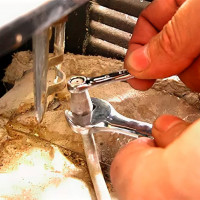 Replacing the nozzles in the Hephaestus gas stove: a detailed guide for replacing nozzles
Replacing the nozzles in the Hephaestus gas stove: a detailed guide for replacing nozzles 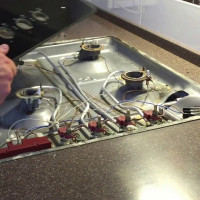 Do-it-yourself gas stove repair: common malfunctions and how to fix them
Do-it-yourself gas stove repair: common malfunctions and how to fix them 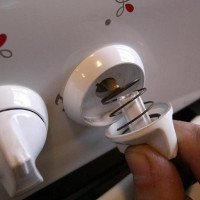 How to remove handles from a gas stove: how the handle is arranged and what to do when it does not come off
How to remove handles from a gas stove: how the handle is arranged and what to do when it does not come off 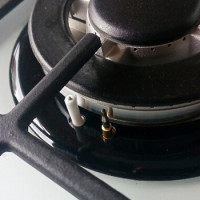 Repair of a gas stove Gorenje: frequent breakdowns and methods for their elimination
Repair of a gas stove Gorenje: frequent breakdowns and methods for their elimination  How much does it cost to connect gas to a private house: the price of organizing gas supply
How much does it cost to connect gas to a private house: the price of organizing gas supply  The best washing machines with dryer: model rating and customer tips
The best washing machines with dryer: model rating and customer tips  What is the color temperature of light and the nuances of choosing the temperature of the lamps to suit your needs
What is the color temperature of light and the nuances of choosing the temperature of the lamps to suit your needs  Replacement of a geyser in an apartment: replacement paperwork + basic norms and requirements
Replacement of a geyser in an apartment: replacement paperwork + basic norms and requirements